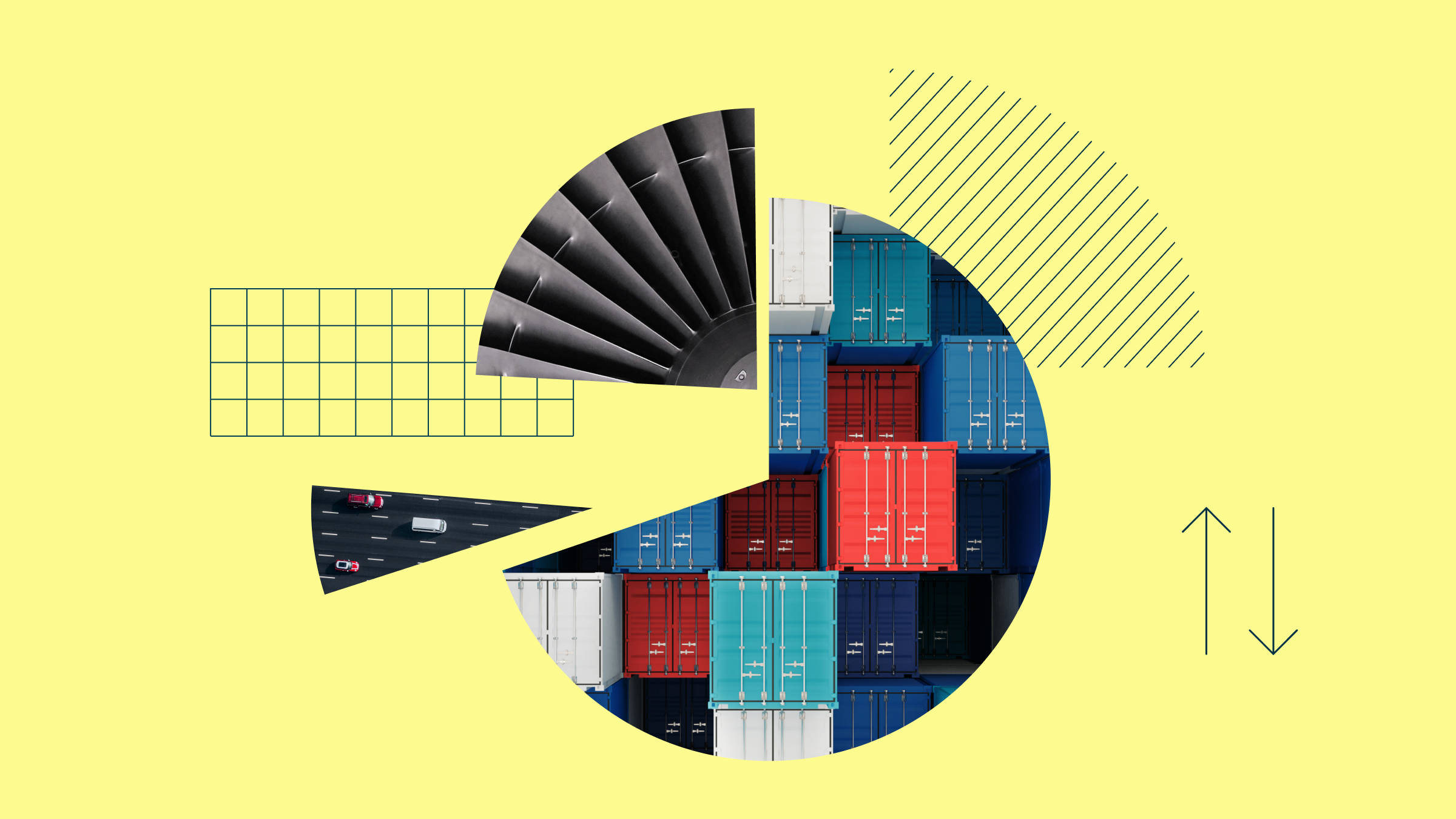Rolle im Portfolio
The CS ETF (IE) on S&P 500 is best suited as a core building block for a portfolio, providing broad exposure to many of the largest companies in the world’s biggest economy. With 500 large cap constituents, the S&P 500 Index covers three-quarters of the U.S. equity market and is well diversified by sector and security. Increasingly, the underlying companies themselves are becoming geographically diversified, getting more and more of their revenue from outside the United States. Over the last 20 years, the S&P 500 has exhibited annualised volatility north of 15%, implying that it may be more appropriate for those with a lengthy time horizon. During the same period, it has shown a correlation to the MSCI World Index (in local currency) of 94%, to European equities (local currency) of 83%, and to emerging markets equities (again, as measured in local currency) of 68%. U.S. equities comprise a large portion of many global equity indices, for example they made up 53.4% of the MSCI World Index at the end of April. So combining this fund with a global product might result in an overweight to U.S. equities. It would therefore work better in conjunction with an EAFE or World ex-U.S. exposure. The fund does not distribute any of the dividends paid by its underlying constituents, instead reinvesting them immediately to maintain full exposure. Therefore, this product may not suit an investor looking for regular investment income.
Fundamentale Analyse
Though its fortunes have been overshadowed somewhat by the events unfolding in Europe, the United States has continued to show lacklustre progress towards economic recovery. The unemployment rate, while down from its highs, is still stubbornly lofty at 8.1%, and a portion of the decline seems due to some workers giving up on their job search and therefore falling out of the official calculation. GDP advanced at an annualised rate of 2.2% in the first quarter of 2012, a slight improvement on the 2.1% rate seen in the first quarter of the year before. The housing market has also been in a protracted funk thanks to an overhang of foreclosures. The S&P/Case Shiller Home Price Index 20-city composite is still at or near its cyclical lows, registering levels not seen since January 2003, and more than 33% down from its peak in 2006. Historically, spending by the U.S. consumer has been a key driver of growth domestically and around the globe, importing a host of finished goods from China and other growing markets. But after the implosion of the residential housing bubble, recession followed by a largely jobless recovery, and reluctance of banks to make loans, the average household doesn’t have the spending clout it once did. That situation, along with increased government austerity, could limit the country’s potential for growth, even as corporate balance sheets and profitability appear healthy. To pick up the stimulus slack, monetary policy has been extremely accommodative. The Federal Reserve has lowered short term interest rates to near zero, and signalled that they will persist at current levels for the foreseeable future. Further, it has embarked on several rounds of quantitative easing. Despite this, the market does not appear overly worried about inflation, as evidenced by 10-year yields currently as low as 1.75% and 30-year Treasuries yielding less than 3%. As a result of the even bleaker situation in Europe, the U.S. has maintained its safe haven status among investors, which has enabled the government to continue to borrow on the cheap. With a federal election looming in the fall, cooperation across party lines has been elusive. The situation could come to a head in coming months as both sides negotiate over the debt ceiling. Similar squabbles last summer led to a downgrade of U.S. debt by Standard & Poor’s, and a sharp sell-off in equity markets. The S&P 500 has produced an average total return of 8.52% per annum over the last 20 years, though the 10- and 5-year annual gains have been more modest at 4.71% and 1.00%, respectively. Like most equity exposures, the index took a drubbing during the financial crisis, falling more than 43% in the year ending February 2009. Much of that came from exposure to the embattled financials sector, which represented roughly 22% of the index at the start of 2007, but has since seen its weighting decline by a third. A lot of that reduced weight has been replaced by the information technology sector, which has gone from a 15% weight to more than 20%. After bottoming out at 9.4 in February 2009, the price-to-earnings ratio of the S&P 500 has climbed to 15.3, which is still below its trailing 10-year average of 16.9.
Indexkonstruktion
The S&P 500 Index is a free float capitalisation-weighted portfolio of 500 large, United States domiciled stocks. To join the index, constituents must meet minimum liquidity requirements, must have a public float greater than 50% of the value of their stock, and must have market capitalisations above $4 billion. A committee maintains the index and meets regularly to review its underlying components, making changes on an as-needed basis. If a constituent falls out of line with any of the index’s entrance criteria, the committee can use its discretion to keep it in the index if the change is deemed temporary. New entrants to the index are also meant to contribute to its overall sector balance, as measured using the Global Industry Classification Standards (GICS®). As of the end of March the most significant sector exposures were Information Technology at a 20.5% weight, Financials at 14.9%, Healthcare at 11.4%, Energy at 11.2%, and Consumer Discretionary, Consumer Staples, and Industrials all at weights between 10.6% and 10.9%. Portfolio concentration is limited, with the top ten stocks in the index making up just 20.6% of its total. Top constituents at the end of March were Apple, Exxon Mobil, and IBM, at weights of 4.39%, 3.21%, and 1.90%, respectively. The median market capitalisation of constituents was $11.9 billion.
Fondskonstruktion
The fund currently uses full replication to achieve its benchmark exposure, building a portfolio that owns the same stocks as those in the index, with the same weights. The fund is Irish domiciled and has the U.S. dollar as its base currency. It is listed on the London Stock Exchange in both U.S. dollars and British pounds, is ISA eligible and has UK Reporting status. It has assets of roughly $650 million. The fund’s prospectus gives Credit Suisse the flexibility to change the fund’s replication method, to stratified sampling or synthetic, or any combination of the three, according to its discretion. In the case that the fund used swaps for synthetic replication, the counterparty would normally be a member of the Credit Suisse group. Swaps could be funded or unfunded, with the substitute basket or collateral held by the fund’s custodian and marked to market on a daily basis. Dividends paid to the fund by its underlying holdings are immediately reinvested, rather than being distributed to the fund’s investors. This should reduce the cash drag that can result from accumulating dividends in advance of periodic distributions. Securities lending within the fund is permitted by the prospectus, although at the time of writing this fund was not part of the firm’s securities lending programme.
Gebühren
The fund’s total expense ratio is 0.20%. Other costs potentially borne by the unitholder but not included in the total expense ratio include bid-ask spreads on the ETF, transaction costs on the infrequent occasions when the underlying holdings change, and brokerage fees when buy and sell orders are placed for ETF shares.
Alternativen
Beyond the S&P 500, there are a number of index alternatives for the U.S. equity market, including the Dow Jones Industrial Average, which is price weighted and more concentrated in its holdings, and the technology-heavy NASDAQ. To get exposure to the S&P 500 Index there are a number of ETF choices, including ComStage ETF S&P 500, HSBC S&P 500 ETF, db x-trackers S&P 500 TR, Lyxor ETF S&P 500, Source S&P 500, SPDR S&P 500 ETF, iShares S&P 500, and UBS-ETFs plc S&P 500 TRN. Of these, the iShares product is by far the biggest, with assets of $9.7 billion. The product with the lowest TER is the HSBC fund, with a TER of 0.09%. For alternatives to market capitalisation weighted exposure to U.S. equities, there are also Ossiam ETF US Minimum Variance NR, db x-trackers S&P 500 Equal Weight, and PowerShares Dynamic US Market Fund.

















